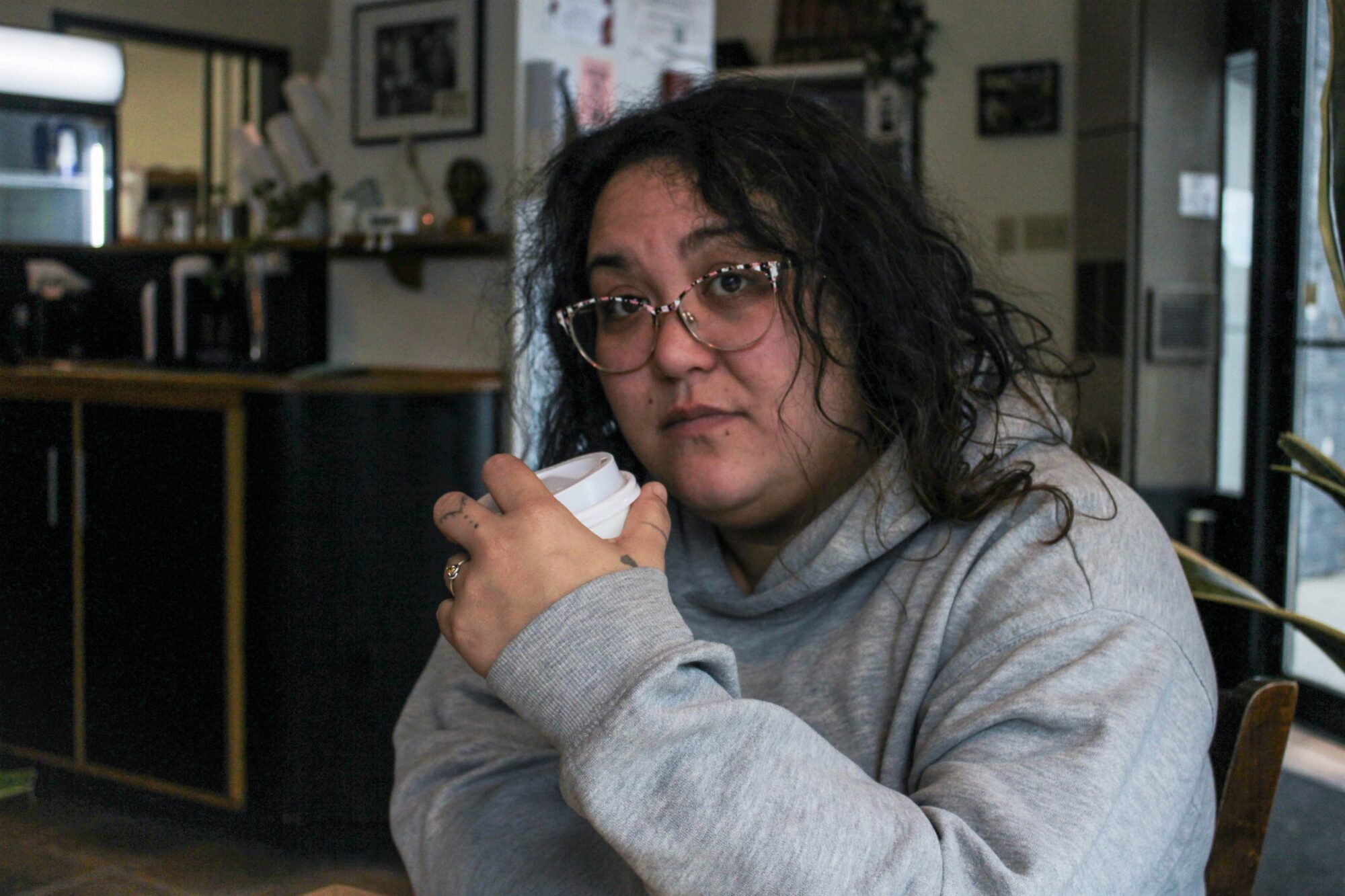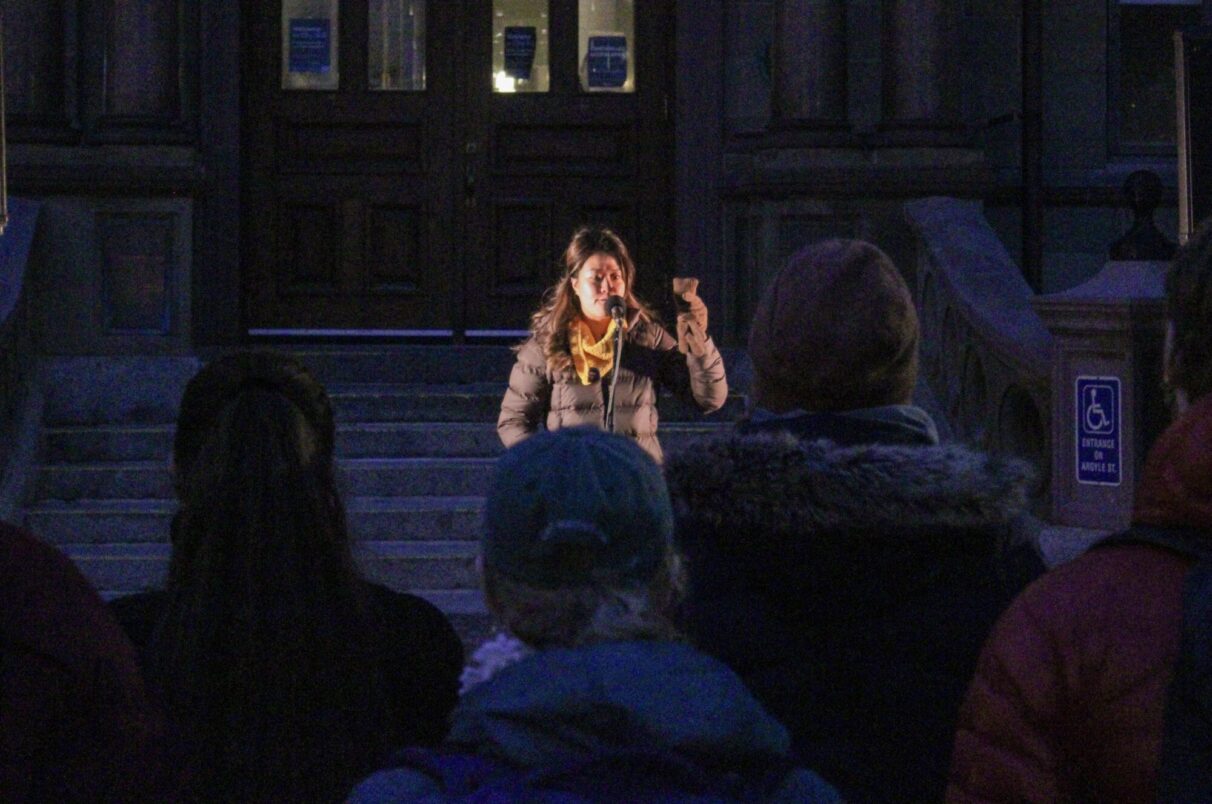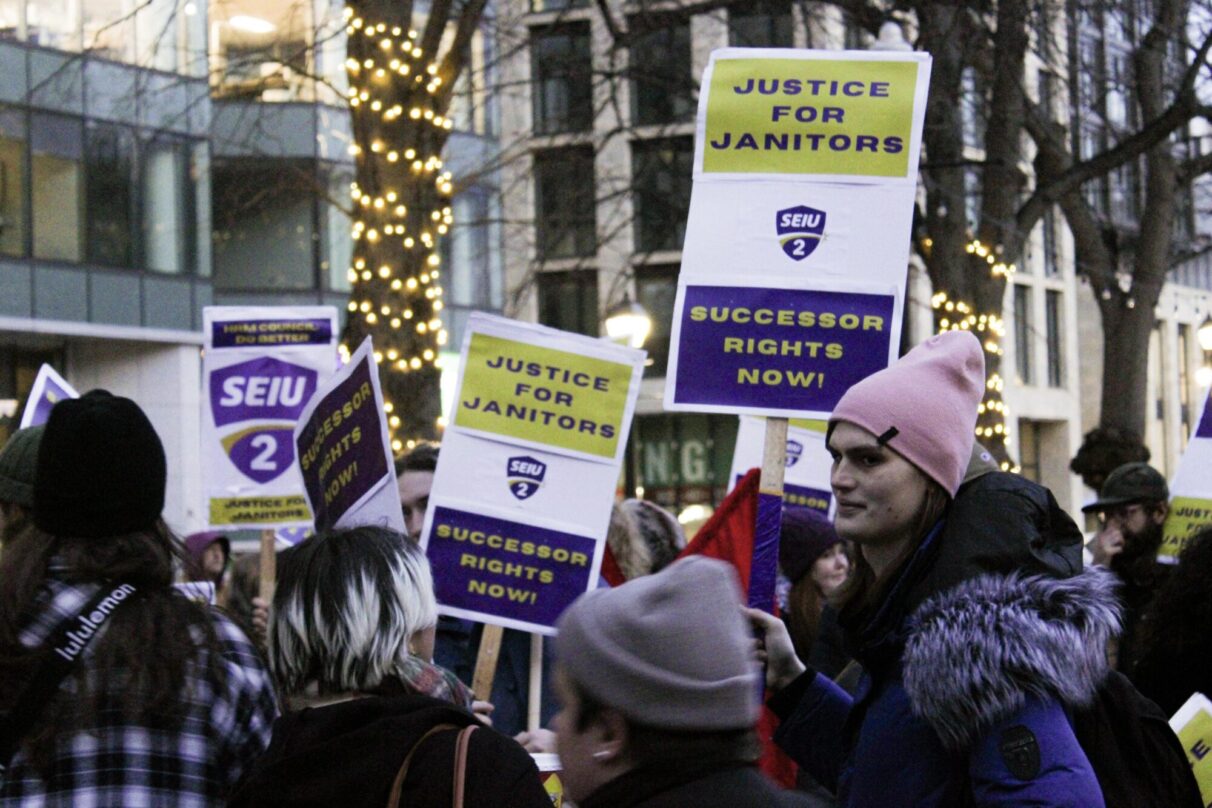Home at last

caption
“It’s an uphill battle, but we’re trucking on, I guess," said Ayles. "We don’t really have much of a choice. If you wanna unionize, then we’ve gotta put in the work.”The long road to unionizing Nova Scotia’s largest homeless shelter
Terri Ayles found another needle today. Syringes are just a part of the job. Ayles can’t say much about what goes on behind the closed doors of the Bridge homeless shelter in Dartmouth. But conditions are getting worse. Sometimes workers feel uncomfortable. Sometimes they feel unsafe.
The Bridge, which opened in 2023, has 185 residents. Nestled on the Dartmouth side of the Macdonald Bridge, it’s the largest shelter in Atlantic Canada. Built as a hotel in 1965, it was most recently a DoubleTree by Hilton. Now Nova Scotia leases the seven-floor facility to the shelter group Adsum for Women & Children.
Ayles is a support worker: helping clients make and manage appointments, cleaning the facility and lending an ear. Things can go well and really wrong in the same day. The only people Ayles can talk to about the stress are coworkers. It feels isolating. On bad days it can feel like your hands are tied and no one is there to help you.
Even when Ayles feels beaten down, the work comes first. This is why more workplace support is desired. Other staff members agree. That’s why in June 2024 they voted on whether to join the Service Employees International Union Local 2.
Ayles says higher pay would be a dream. Mostly staff want to prevent burnout, so would like flexible sick days, benefits for their families and job security. This kind of support “would raise the comfort of folks staying in the shelter, too,” Ayles said. After all, workers with higher pay and flexible sick days would be able to work better and longer.
Ayles started working part-time the month before the vote, in May. On their second shift, a coworker asked if Ayles’s vote could be counted on. It could.
After the Bridge staff officially voted in June, the ballots were sent to the Nova Scotia Labour Board office. There they remained, unchecked, for ten uncertain months.
The daily grind
Unions in Canada are losing ground. In 1984 they peaked, with 38 per cent of Canadian workers belonging to a union. In 2024, that number was 28 per cent.
This isn’t because unions fail to support workers. According to the Canadian Labour Congress, union workers make on average $7 per hour more than their non-union counterparts. Union workers often have better working conditions and a shorter work week.
So why aren’t more workers signing up?
Unionizing in Nova Scotia is excruciating, says Tina Oh. She’s one of the SEIU2 organizers working with Bridge staff. With just 29 per cent of Nova Scotian workers in unions, the province has the fifth-lowest union rate in the country. Oh says this doesn’t represent what workers want. The reason the number is so low in Nova Scotia, she believes, is fear.
“The fear of sticking your neck out, or being marked as a troublemaker, or potentially losing your job,” said Oh. “I don’t think that fear will ever go away.”

caption
Union organizer Tina Oh says, “When we fight, we win.”Nova Scotia strengthened labour laws in 2011. The then-NDP government introduced first contract arbitration, which — if the workers and employer can’t see eye-to-eye — provides third-party mediators for first agreements. It promotes good faith bargaining and shortens the time for workers to see better conditions. First contract arbitration is also common across the country: six other provinces have it established in law. After the NDP lost power in 2013, the incoming Liberal government diminished this law to remove time limits and require proof of bad faith. It’s remained in this state ever since.
In Halifax, two workplaces recently unionized with SEIU2: Pete’s Frootique food store and the Java Blend roaster and cafe, both in 2024. Each staff waited more than 300 days for votes to be counted by the Labour Board. Delays are common in many governmental procedures, and usually there are established reasons for this. In Nova Scotia, employers can lengthen delays by debating which employees’ votes should be counted. When they do, months of hearings begin. If an objection has precedent, the Board has to make investigations. Delays sometimes mean union momentum falters and workers give up.
Organizing is hard enough, says Oh. Often, the uncertainty of waiting for the vote to be counted demoralizes a workplace and people lose faith. “I think about it constantly. The work definitely keeps me up at night,” she said. “And it haunts me in my sleep.”
The stress is so bad that Oh now has to wear a mouth guard at night, to prevent her from grinding her teeth.
‘I love my job’
The stress gets to Ayles, too. After work, if the shelter was chaotic, or one too many dirty needles was handled, they walk home. It takes an hour, so busing or an Uber would be more convenient. But that doesn’t matter. Ayles needs the walk.
Despite the stress, Ayles believes in this work. An addictions counsellor by training, they know how poorly people in shelters can be treated. A systemic change is not expected anytime soon, but Ayles says that if they can help just one person, it’s all worth it.
Ayles has experience, not just working and shelters, but staying there. Most recently in 2020, when their home flooded. “I was there once, so I know what it’s like,” said Ayles. “And I have been treated like garbage.”
More than a friend
In January 2024, Bridge worker Eilish MacIntyre reached out to Oh at SEIU2. Oh knows how fragile unionizing efforts are, so is careful. Before asking workers to sign cards, SEIU2 works for months to strategize and train an organizing committee.
Those months of planning and worrying together mean something. Oh says forming a union in a workplace creates camaraderie beyond friendship.
On the day the Bridge voted, Ayles says, the energy was palpable. Then, for the next ten months, those bonds were tested. As time went on, some workers lost their faith. Some even quit. In early March, Oh messaged Ayles to say the wait was over. The votes would be counted the coming week.
Eight days later on March 20, 2025, the results were in. Fully 98 per cent had voted in favour. The Bridge workers officially became part of the Service Employees International Union. Ayles couldn’t be at the count, or at celebrations with coworkers that followed. They had to work. But Ayles will still be celebrating in their own way.
“I think I might walk home,” said Ayles, “and just enjoy my excitement.”
Oh says the count is vindicating. But a lot of work still needs to be done. Not just for Bridge workers, who now have to negotiate a contract with their employer, but for the next fight, too. SEIU2 is suing HRM and Imperial Cleaners on behalf of GDI Integrated Facility Services’ recently unionized janitors. They lost their jobs when city council awarded GDI’s contract to Imperial, a non-union company.
There is always, Oh says, another fight.

caption
Protestors rallied to support Alderney Landing janitors.The pro-worker agenda
Labour laws in Nova Scotia are leagues behind some western provinces. Laws about unionizing are one thing, but even some basic working standards suffer on the East Coast. B.C. has almost the same unionization rate as Nova Scotia, with 29 per cent of workers in unions. But they benefit from shorter work weeks and a higher minimum wage.
In summer 2024, the B.C. minimum wage reached $17.40 an hour, more than $2 above Nova Scotia’s $15.70. (On Oct. 1 it goes up to $16.50.) Victoria, the capital of B.C., is similar to Halifax in many ways; there are 397,000 residents in Greater Victoria and 417,000 in HRM. But the cost of living in Halifax is higher. Calculated by the Canadian Centre for Policy Alternatives, living in Halifax means having to make $28.30 an hour while Victoria’s livable wage is $26.96.
Overtime is one way for workers to bridge the gap between wages and rent. It’s not ideal, but it helps. In B.C., time-and-a-half pay starts after any consecutive eight-hour shift or if a work week exceeds 40 total hours. In Nova Scotia, overtime starts after a 48-hour work week.
B.C. is also home to the Fraser Institute, a conservative think tank which in March 2025 presented the webinar Labour Unions and the Pro-Worker Agenda. The talk was given by Liya Palagashvili, director of the Labour Policy Project at George Mason University in Fairfax County, Va.
She spoke about improving labour standards without unions. Palagashvili said market freedom and flexible laws make a productive economy, and this is what will benefit workers. “A pro-worker agenda is one that can maximize a flourishing and dynamic entrepreneurial environment that can constantly create better jobs,” she said. “You know, destroy worse ones and old ones.”
Palagashvili addressed workers who fall behind to technological advancement, suggesting that workers between jobs can use websites like Uber and Etsy to sell their labour independently.
Workers need to stop striking, she said, because striking costs employers money and risks the life of a company. Better, she said, to address low wages “while creating fewer labour market distortions.”
Broad shoulders
While the world changes, the workplace stays the same. According to the Workers’ Action Centre (a non-profit supporting non-unionized workers) the same challenges haunt workers every year: harassment at work, discrimination and wrongful termination. Sydnee Blum, executive director of the Halifax office, says the political climate and cost of living crisis are making matters worse. “Now we’re in an environment where, if you are terminated,” she said, “the consequences are a lot more dire.”
The Workers’ Action Centre mostly helps smaller staffs that struggle to unionize. Blum says about 75 per cent of the people who come to the Centre make less than $50,000 a year, and 70 per cent have already been laid off. The Workers’ Action Centre connects them with pro bono lawyers to fight each case. But it never feels like enough.
Blum says it’s a twofold issue: the province needs to expand from a complaint-based system to proactively enforcing labour laws. At the same time, workers need to be ready to organize for what they want.

caption
This Dartmouth building until 2023 was a DoubleTree by Hilton hotel. Now it is The Bridge, Nova Scotia’s largest homeless shelter.At the Bridge, Ayles sees people deeply affected by the cost of living crisis. In 2023, Statistics Canada said Nova Scotia shelter capacity had increased 136 per cent since 2016. Ayles says COVID made the difference. “Everything got worse. Full families are just houseless and couch hopping.”
That’s why Ayles goes to work every day. They understand just how little stands between housing and living on the street or in a shelter.
Of course it wears on them. But despite a sometimes volatile workplace, Ayles says they can handle it. This is the fight Ayles signed up for. They’re not backing down.
“Maybe that’s just me being overconfident, but I feel like I can carry this for a significant amount of time,” said Ayles. “I have broad shoulders.”
About the author

Eamon Irving
Eamon Irving will graduate this spring with a Bachelor of Journalism (Honours) degree from the University of King’s College.
